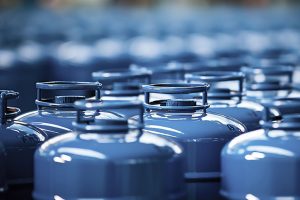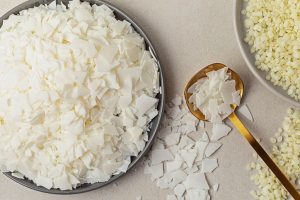What is MC Bitumen: Specifications and Features + Applications
MC bitumen is a mixture of bitumen and petroleum solvent. Therefore, it has various characteristics and specifications, including good viscosity, controlled curing time, and heat resistance. Due to these features, medium-curing bitumen has many uses and applications, such as constructing protective asphalt, single-coat surface dressing, and continuous grading. However, medium-curing bitumen is not just one type, and its different varieties have specific uses, which we will explain further in this article from Iran ETrade.
What is MC bitumen?
The quality of medium-curing bitumen varies depending on the solvent used in its production. The better the quality of the solvent, the lower the bitumen’s viscosity, and vice versa.
For MC bitumen production, manufacturers use bitumen and petroleum solvents. They also produce medium-curing bitumen according to the ASTM D 2027M-13 standard and mix it with polymers such as polyethene and SBS to improve its adhesion and resistance. Applying petroleum solvent to medium-curing bitumen reduces its viscosity and lowers its fuel consumption. But what exactly are the specifications of medium-curing bitumen?
(To learn more about the properties of bitumen viscosity, read the article published on the blog.)

Specifications of MC Bitumen
MC bitumen has the following specifications:
| Specifications | Minimum | Maximum | Test |
| Kinematic viscosity based on CSt at 60°C | 800 | 1600 | |
| [150] 66 |
Distillation test: The volume percent of distillates distillate at various temperatures relative to the temperature at which distillation occurs at 360°C.
| At 225°C | ASTM D402 | ||
| At 260°C | 40 | ASTM D402 | |
| At 316°C | 45 | 85 | ASTM D402 |
The volume percent of distillates distillate at various temperatures relative to the distillation temperature of 360°C. Distillation residue test:
| Penetration at 25°C | 120 | 300 | ASTM D5 |
| Malleability at 25°C in centimeters. | 100 | – | ASTM D113 |
| Solubility in trichloroethylene (%). | 99 | – | ASTM 2042 |
| Water content (%). | – | 2 | ASTM D95 |
Types of MC Bitumen
Among different types of medium-curing bitumen, MC-30 has many different uses in various industries.
Medium-curing bitumen is categorized based on criteria such as the amount of polymer, penetration grade, and type, which include:
- MC-30 Bitumen: One of the most commonly used bitumen in various industries; it consists of 58% bitumen and has the lowest viscosity.
- MC-70 Bitumen: Its most common application is in the production of asphalt for various surfaces.
- MC-250 Bitumen: Its main application is producing base asphalt.
- MC-800 Bitumen: Composed of 80% bitumen and 20% petroleum solvent.
- MC-3000 Bitumen: The primary use of this bitumen is for insulating surfaces, which consists of 10% solvent and 90% bitumen.
- Polyethene MC Bitumen: This bitumen is produced by adding polyethene, which gives it high resistance and makes it suitable for moisture and heat insulation.

Properties of MC Bitumen
Due to its composition and structure, MC bitumen has unique chemical and physical properties, which include:
- Medium-curing bitumen is resistant to temperature changes and retains its properties even at high temperatures
- Medium-curing bitumen has good adhesion to surfaces
- It offers excellent flexibility
- It has a low viscosity
- Compared to many other types of bitumen, it has a lower viscosity, making it easier to use.
- The solvents in medium-curing bitumen slow down its curing time and evaporation
- Due to its lower viscosity, medium-curing bitumen penetrates surfaces more easily
Applications of MC Bitumen
Due to its properties, MC bitumen is used for:
- Producing cold asphalt in factories
- Creating asphalt primer and surface layers
- Manufacturing continuously grading asphalt
- Quick asphalt repair and patching
- Applying protective asphalt coatings
- Producing single-layer and multi-layer surface asphalt
- Waterproofing roofs and underground structures
(Click for information on online bitumen prices.)
Advantages of Using MC Bitumen
The structure and properties of MC bitumen provide specific benefits, including:
- Ease of Use: Due to its low viscosity, medium-curing bitumen spreads easily on various surfaces without requiring excessive heating.
- Saving Costs And Time: Since medium curing bitumen does not need to be highly heated for application, it reduces both costs and time in its application.
- Resistance to Environmental Conditions: Medium curing bitumen is resistant to moisture and temperature fluctuations, making it suitable for projects in harsh environmental conditions.
- High Durability and Strength: After the solvent evaporates, Medium curing bitumen solidifies, providing strong adhesion and durability to surfaces.
Differences Between Bitumen Emulsion and Medium Curing Bitumen
MC bitumen and bitumen emulsion have a similar appearance, which sometimes leads to confusion. However, their main difference is in the type of solvent they use for production.
(Click for more information about anionic emulsion bitumen.)
Medium-curing bitumen (MC) is made by using petroleum solvents, while bitumen emulsion is produced using water as a solvent. This difference results in distinct and different characteristics for each, including:
- Bitumen emulsion is cheaper than MC bitumen
- Bitumen emulsion has lower resistance to freezing and cold temperatures
- Bitumen emulsion is less flammable compared to MC bitumen
- Bitumen emulsion is more environmentally friendly
- Applying emulsion bitumen is easier and more cost-effective than medium-curing bitumen
- Unlike medium-curing bitumen, bitumen emulsion is applicable in humid environments
- Bitumen emulsion has a limited shelf life, whereas medium-curing bitumen lasts longer
(Click to learn about bitumen producers in Iran.)
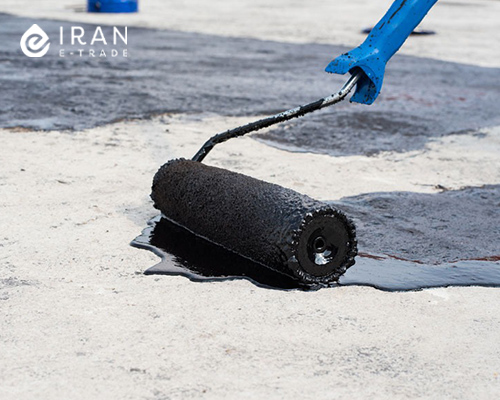
Disadvantages and Limitations of Using Medium Curing Bitumen
Although MC bitumen has many advantages, using it also has the following drawbacks:
- Environmental Pollution: The evaporation of petroleum solvents in medium curing bitumen can contribute to environmental pollution.
- Fire Hazard: Petroleum solvents in medium curing bitumen make it flammable, which requires special safety precautions.
- Poor Performance in Low Temperatures: Medium curing bitumen is less effective in extremely cold conditions.
Medium Curing Bitumen Production Process
During the production of MC bitumen, manufacturers follow these steps:
- Step 1: Selecting high-quality pure bitumen.
- Step 2: Adding a medium-viscosity solvent to the pure bitumen and mixing them.
- Step 3: The pure bitumen and solvent are blended under specific temperatures and conditions to achieve a uniform final product with the desired properties.
Application Method for Medium Curing Bitumen
When road construction workers or waterproofing engineers apply MC bitumen to a surface, they have to follow these steps:
- Surface Preparation: The surface must be completely clean and free of contaminants to ensure optimal adhesion of the medium-curing bitumen.
- Using Proper Equipment: Specialized equipment, such as bitumen sprayers, should be used to ensure an even application of bitumen on the surface.
- Controlling Temperature and Environmental Conditions: To achieve the best application quality, you should maintain environmental temperature within an optimal range.
Medium Curing Bitumen Standards and Quality
To produce high-quality MC bitumen, manufacturers must adhere to certain standards, including:
- ASTM Standards, which regulate viscosity and adhesion control in bitumen production.
- ISIRI Standards in Iran ensure the quality of medium-curing bitumen.
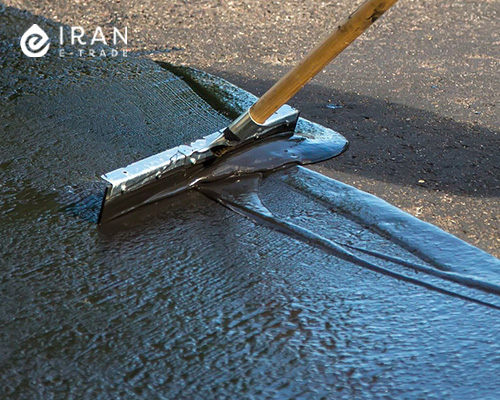
Important Considerations for Using Medium Curing Bitumen
When storing and using MC bitumen, consider the following:
- Due to the petroleum solvents in medium curing bitumen and its flammability, It is important to strictly follow its transportation standards.
- Store medium curing bitumen in a cool, dry place and away from flammable materials.
- For optimal application, you should apply this bitumen in moderate environmental temperatures.
Frequently Asked Questions About MC Bitumen
Common questions about MC bitumen include the following:
What are the Characteristics of Medium Curing Bitumen?
Due to its composition and physical and chemical properties, MC bitumen has the following features:
- Lower viscosity compared to most other bitumen products
- Resistant to high temperatures
- Good adhesion
- High permeability due to low viscosity
What Are The Types of Medium Curing Bitumen?
The types of MC bitumen are:
- MC-30
- MC-70
- MC-250
- MC-800
- MC-3000
Which Medium Curing Bitumen is Mostly Used?
Among the types of MC bitumen, MC-30 has the lowest viscosity and is the most widely used in various industries.
How is Cutback Bitumen Produced?
Cutback and MC bitumen are produced by mixing regular bitumen with a petroleum solvent.
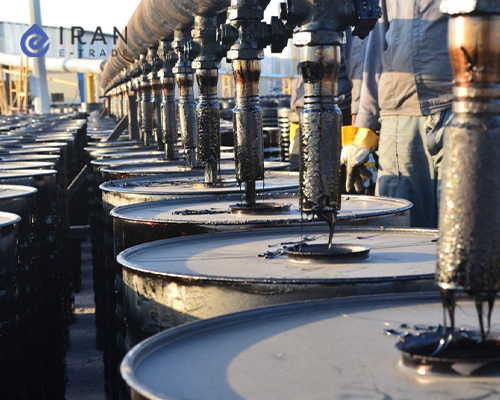
reference: gulfbitumen
- The Largest Bitumen Refineries In The World: Top 20 Refineries...
- What Is An Oil Lubricant: Types, Applications + Production
- What Is LPG: Properties + Uses Liquefied Petroleum Gas
- What Is Petroleum Paraffin: Types + Properties And Applications
- What is Petroleum Coke: Types + Applications
- What Is Mazut: Advantages, Applications + Hazards





